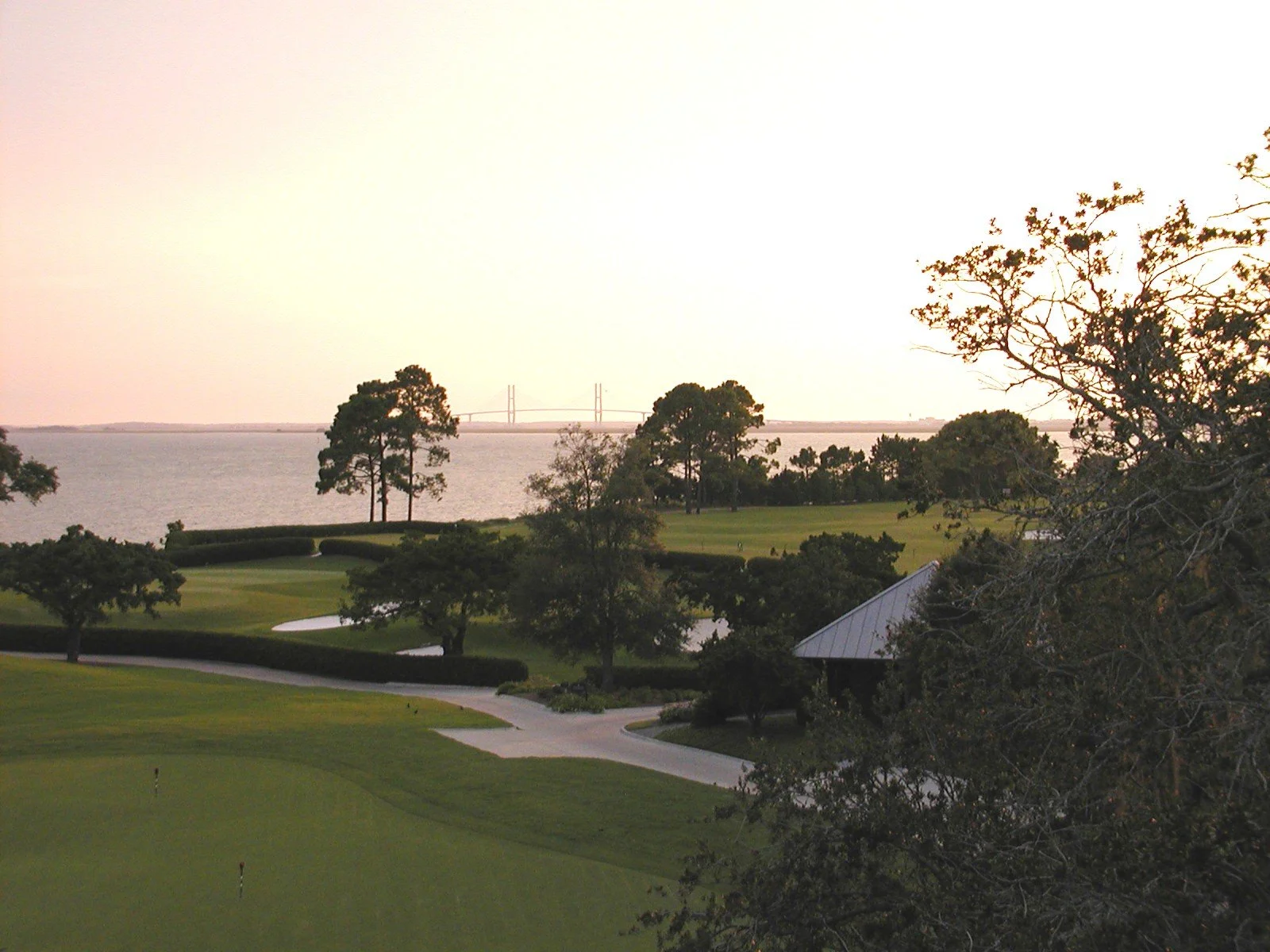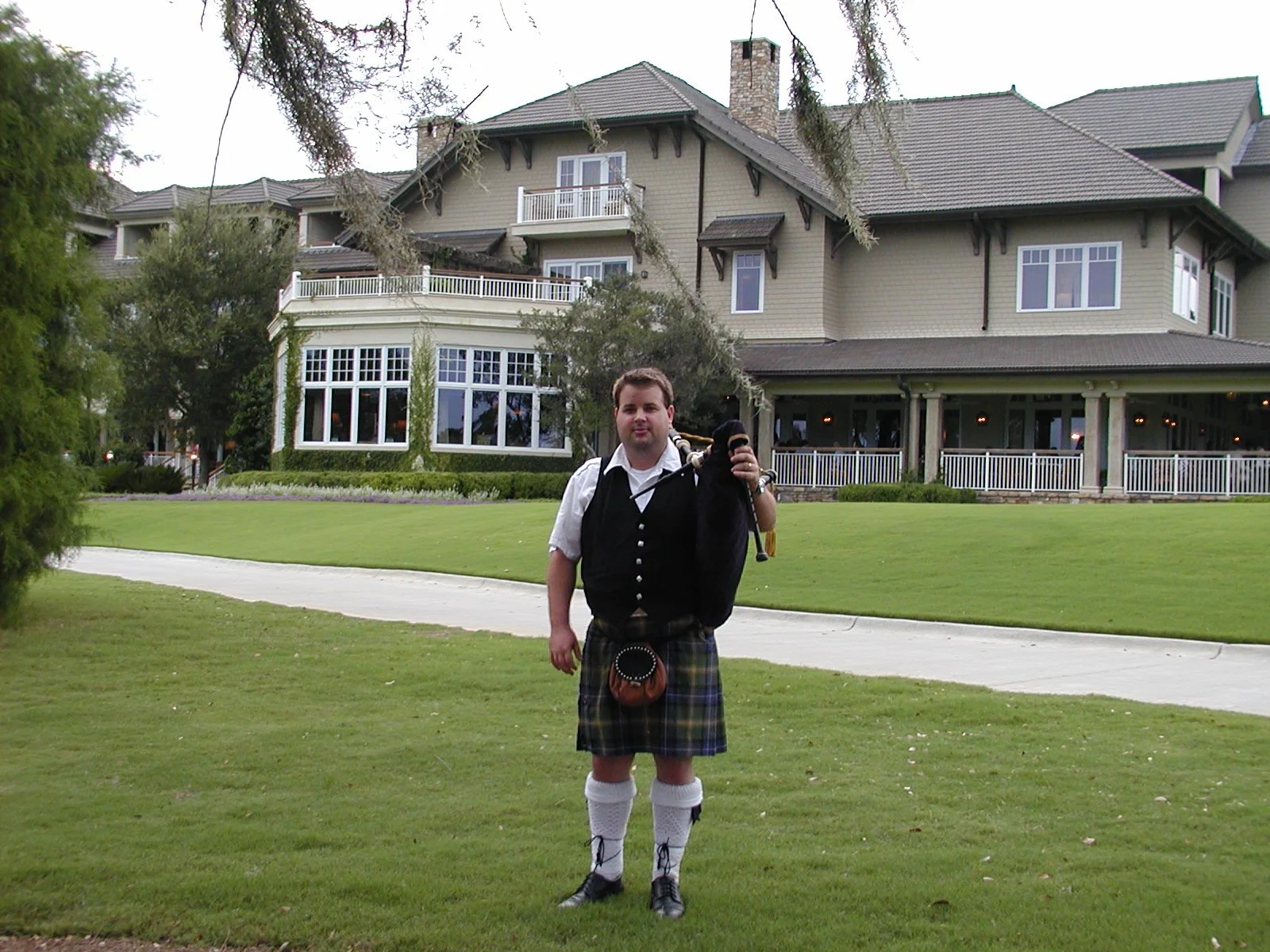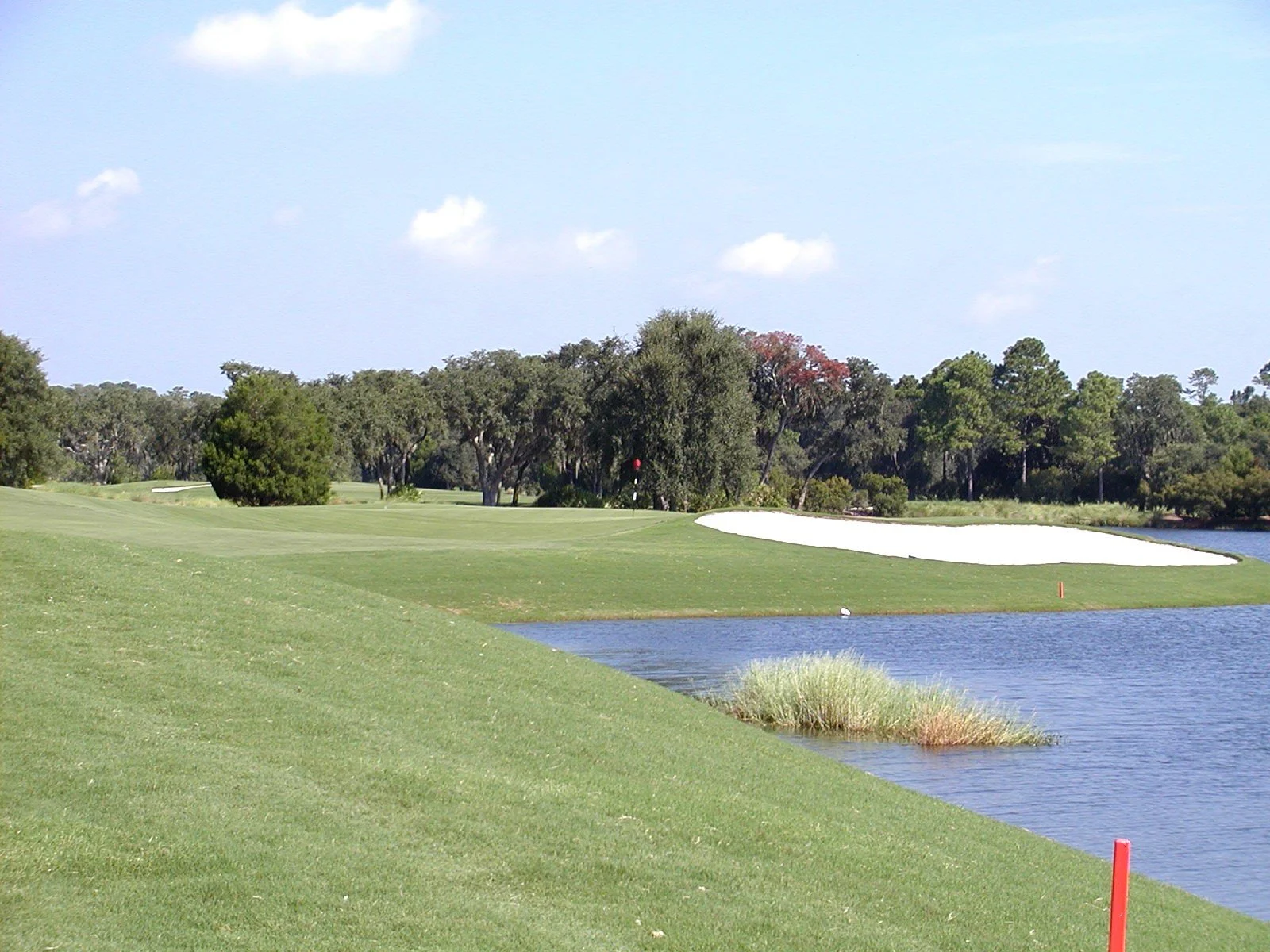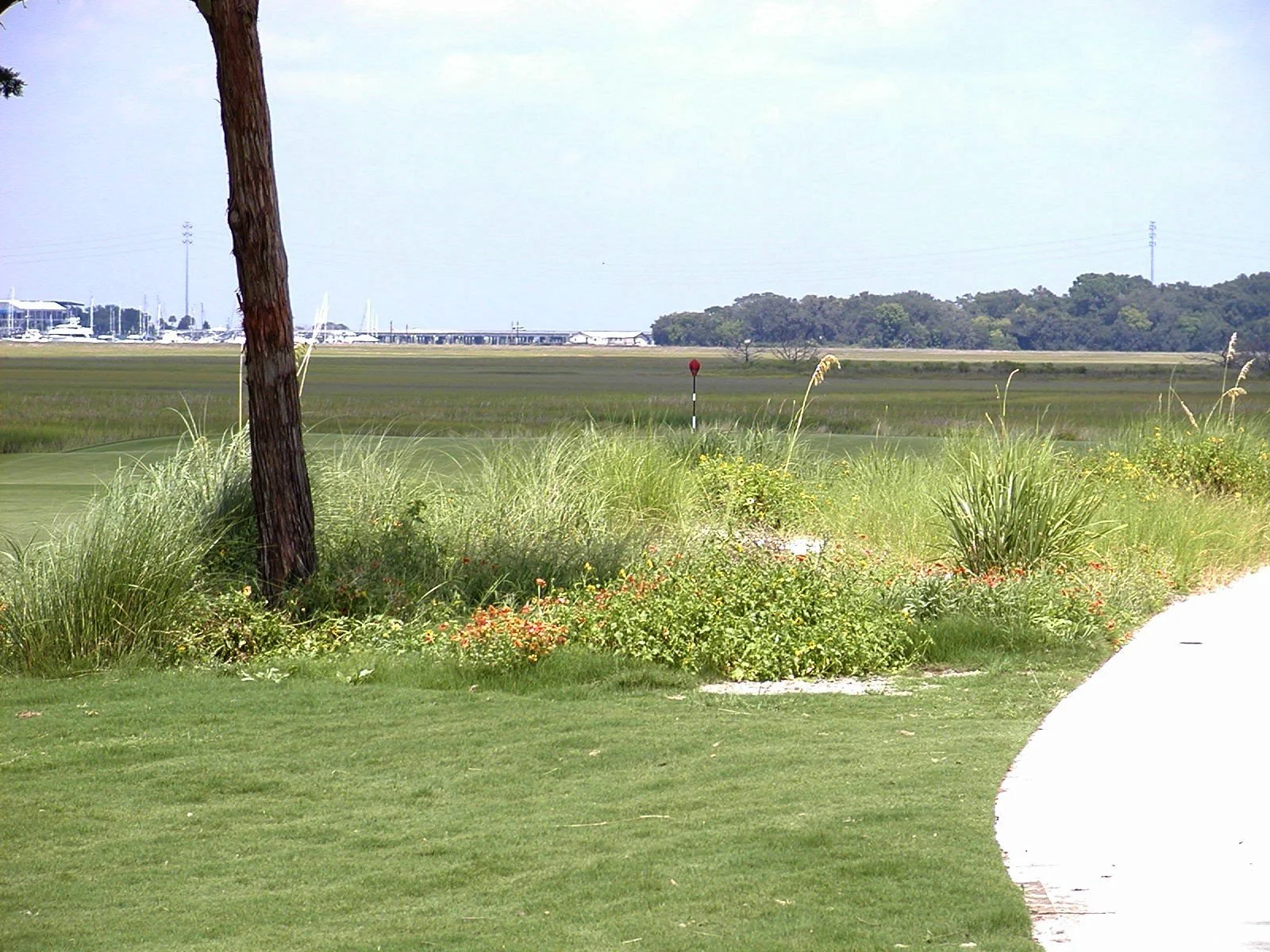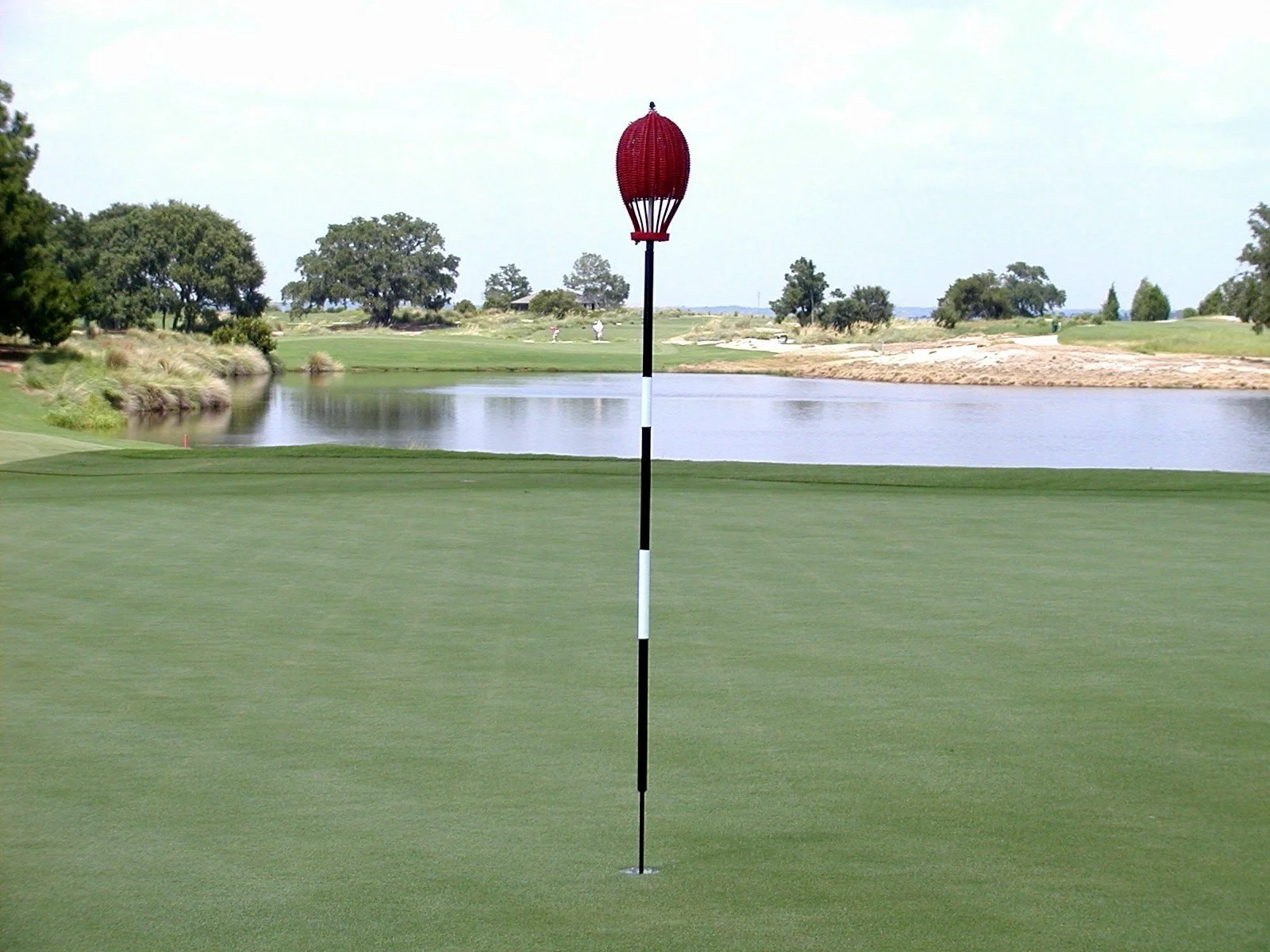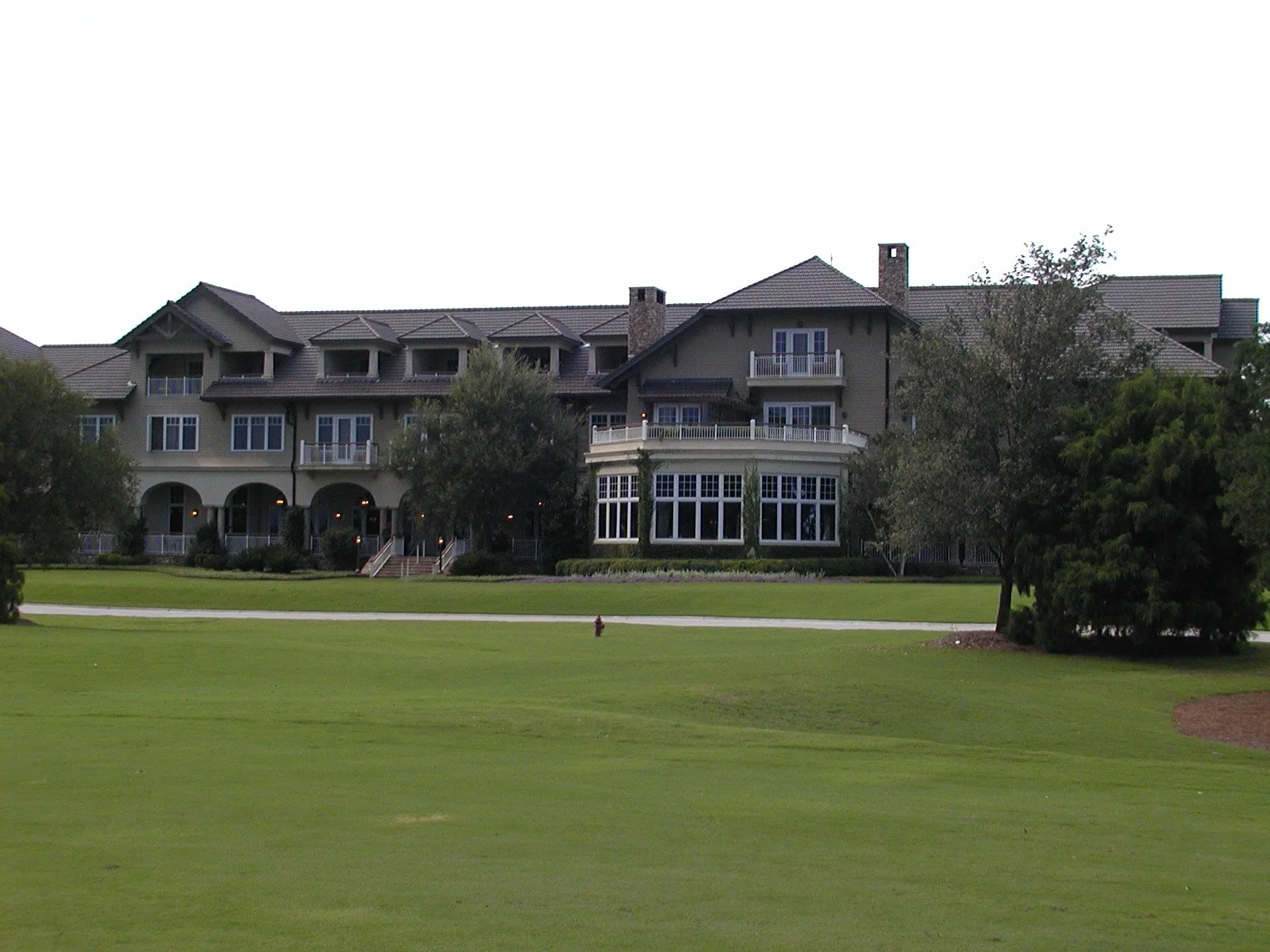SEA ISLAND GC (SEASIDE COURSE)
Course Architect(s): Harry Colt and Charles Hugh Alison (1929), Joe Lee (1973),
Tom Fazio (1999), Love Design Team (2025-26).
Year Opened: 1929
Location: St. Simons Island, Georgia
Slope: 137. Rating: 72.3
Par: 70
Yardage: 7,005
Hole-by-Hole: 1 - Par 4 417 Yds 10 - Par 4 418 Yds
2 - Par 4 415 Yds 11 - Par 4 425 Yds
3 - Par 3 204 Yds 12 - Par 3 223 Yds
4 - Par 4 429 Yds 13 - Par 4 408 Yds
5 - Par 4 409 Yds 14 - Par 4 442 Yds
6 - Par 3 179 Yds 15 - Par 5 565 Yds
7 - Par 5 582 Yds 16 - Par 4 407 Yds
8 - Par 4 368 Yds 17 - Par 3 192 Yds
9 - Par 4 452 Yds 18 - Par 4 470 Yds
Par 35 3,455 Yds Par 35 3,550 Yds
Key Events Held: USGA Senior Amateur (1963),
USGA Senior Women's Amateur (1971, 1980, 1988, 1994, 2000, 2006),
U.S. Mid-Amateur Championship (2004),
UBS Cup (2002-03),
Georgia State Amateur (1931, 1939, 1989),
LPGA Tour's Sea Island Women's Invitational (1954-58, 60-63),
Canon Cup (2003),
SEC Championship (2001-13),
McGladrey Classic (2010-2014), RSM Classic 2015-Present).
Awards Won: Five star rating by Mobil Travel Guide (2002-04),
AAA Five Diamond Award (2002-04),
Best of the Best - #1 Golf Resort in U.S. by Robb Report (2003),
Gold Medal Resort by Golf Magazine,
#9 of Top 100 Golf resorts around the world by Conde Nast (2003),
#6 Best Golf Resort in the U.S. by Conde Nast (2003),
Ranked 2nd best in state (GA) by Golfweek (2004),
Ranked 7th best in state (GA) by Golf Digest (2004),
Number 6 U.S. Golf Resort by Travel + Leisure Golf (2005),
Ranked 32nd America's 100 greatest public courses by Golf Digest (2003-04).
Course Record: 60 (Tommy Gainey, 2012, Sebastian Munoz, 2021, Mackenzie Hughes, 2023).
BUT FIRST: Usually when we do our course reviews we begin with the history of the layout and move into a hole-by-hole analysis. Sea Island Golf Club is the exception. Before even discussing golf, one must first talk about the amenities of this world-class resort.
Once arriving at Sea Island, you are greeted by a warm and friendly staff that seems to know what you're doing before you do. Accommodations: you have your choice of The Cloister or the
Lodge at Sea Island. I stayed at the Lodge and I have to tell you, it is the ultimate for everything.
Let's start out with luxurious rooms and suites, located right above the clubhouse. Look out on the balcony and you have a view of the courses, the Atlantic Ocean and St. Simons Sound and the sunset. The room has every amenity you could think of. Even the bathroom has a heated towel rack or if you want a rose petal bath, you got it.
Oh, did I forget, you even have your own 24-hour private butler to attend to your each and every
request. They even bring you milk and cookies, warm I might add, before you retire. Dining is top notch at any of the Sea Island fares. And you could spend a day or two just walking inside the resort looking over the memorabilia from Bobby Jones to Davis Love III.
There's 54 holes of golf on the Seaside, Plantation and Retreat courses, a state of the art golf learning center headed by none other than Jack Lumpkin, tennis, a shooting school, waterfront
activities, stables, boating, bicycling and of course, a spa and salon. In a word...Amazing!!! Every resort in the United States needs to take notice of Sea Island, because this is the best by far. I could go on and on, but I will leave that for the travel editors and my next trip.
HISTORY: Sea Island Golf Club is rich in history and lore spanning nearly 100 years. The Seaside Course is a blending of Colt & Alison's original nine along with Joe Lee's nine holes which was revamped by Tom Fazio, one of the game's finest course sculptors. Fazio took an existing course that features dunes, creeks, marshes and the St. Simons Sound and turned it into a work of art in the tradition of the old Scottish links.
In 1968, Sea Island signed Tony Jacklin as its touring professional. Within 18 months, Jacklin captured the British Open and the U.S. Open. In 1985, Davis Love III became the resort's PGA Tour representative, following in his father's footsteps, who joined the staff in 1978.
Love III felt that Fazio transformed “18 holes that didn’t match into 18 matchless holes.” A thoughtful restoration will take place in 2025 by the Love Golf Design team, as the course will be closed from July of 2025 through October of 2026. The main focus of the project will be to preserve the course’s original character and introducing some new enhancements. So stay tuned.
Several outstanding championships have been held at Sea Island over the years, including five United States Golf Association Senior Women's Amateurs. Carolyn Cudone won the fourth of her five straight Senior Amateurs at Sea Island while the grand dame of amateur golf, Carol Semple Thompson, captured the second of her four straight Senior-Ams on the Seaside Course.
Marlene Streit, who first captured the Senior Amateur in 1985 and then again in 2003, lost by one shot in 1988 to Lois Hodge at Sea Island, but returned in 1994 to defeat Nancy Fitzgerald in a playoff.
From 1954 through 1963, the LPGA Tour stopped here for the Sea Island Women's Invitational. It certainly could have been called the Mickey Wright Open, as she captured the event five times,
including the final one staged on the island, part of her record 13-win season in '63.
In recent times, the UBS Cup has played two memorable events at Sea Island. In 2002, the United States squad of six players between the ages of 40-49 and six from the 50-and-over group crushed the Rest of the World Team, 14 1/2 to 9 1/2 in an event that is patterned after the Ryder Cup. Captained by Arnold Palmer, the U.S. dominated the singles play winning seven matches
and halving two of the 12 last-day matches for the win. Ray Floyd, Tom Lehman and Tom Watson spirited the play, as they produced 3-0, 3-0 and 2-0-1 records, respectively.
In 2003, the U.S. retained the Cup, as the two sides finished tied at 12. With three matches remaining, the U.S. trailed 11 1/2 to 9 1/2. Brad Faxon gained a point with his 2 & 1 win over Carl Mason and then 2004 Ryder Cup captain Hal Sutton edged Vicente Fernandez 2 & 1 to get the team within 1/2 point. The final match came down to Eduardo Romero versus Scott Hoch. Romero led his American opponent by one heading into the last hole, however Hoch made par on the difficult 18th to square the match and help the United States keep the Cup. "What a wonderful venue," cited captain Palmer. If you invited us, we'd come back again."
With more storied events on the horizon, look for Sea Island to keep rewriting its history books. You know you have something special when Bobby Jones, after first playing the course in 1930 while vacationing during the third and fourth legs of his Grand Slam, commented that the final nine holes were "one of the best nine holes I have ever seen."
The PGA Tour has made the Sea Island Resort a yearly destination since 2010. Some former winners include Heath Slocum (Inaugural Winner), British Open champion Ben Crane, Tommy “Two Gloves” Gainey, Kevin Kisner, Charles Howell III, Talor Gooch, Ludvig Aberg and 2025 winner Maverick McNealy. With his win, McNealy became the fourth consecutive player to make the RSM Classic his maiden victory. McNealy defeated three players, Daniel Berger, Nico Echavarria and amateur Luke Clanton by one shot.
REVIEW: The opening hole is a sweeping dogleg left par four, requiring a right-to-left shot off the tee. The fairway is protected on the right by a pair of bunkers while the left side is tree lined. The bigger the drive, the tighter the landing area. Your approach shot is slightly uphill to a green
that slopes from back to front with a bunker protecting the left side. A solid hole to quick-start the round.
The second is roughly the same length of the first, however this time a dogleg to the right with water all along that side. A solid tee shot will leave just a wedge to a very deep green, protected in
the front by sand. Miss long and you'll have a difficult time getting up and down and whatever you do, don't miss right.
The third is the first of the outstanding par threes on the Seaside Course. A solid 204 yards from the tips, wind will play a huge factor on this hole, as the green is completely exposed to the elements. Marsh protects the left side of the green while a deep bunker guards the front. The entire putting surface features shaved chipping areas around the circumference. A great hole to make par, let alone birdie.
The fourth is as beautiful as it is as difficult. Your tee shot must carry over marsh to a fairway set to the right, with a huge bunker used more for direction than a hazard. Now the hole bends back to the left for your second shot, played directly into the wind. A mid to long iron is required to a rather small green that slopes from back to front with only one bunker on the left. Marsh covers this hole down the entire left side, so bail out right if you must.
Although not as long as its predecessor, the fifth plays very difficult from tee to green, as it doglegs to the right. Now the marsh moves entirely on the right side. You can cut the dogleg with a big drive, but miss slightly to the right and you'll be hitting three from the tee. The landing area of the fairway is quite wide, so don't be ashamed to play safe. The only problem is that now your left with a long shot, dead into the wind. Miss short and you're in sand, long and right, you guessed it, marsh. The putting surface is fairly flat, but club selection is key, as closely mowed chipping areas
abound.
Another outstanding par three, the sixth is the shortest of the quartet, but equally as difficult with a bunker front and center and water deep. With the wind blowing from the right and behind, club selection here will be tough. Play towards the center of the green, two putt and move on.
The par five seventh usually plays downwind, so now it's time to take advantage of the offshore breezes and make birdie. Two solid shots can get you close to the green, setting up an easy pitch to a green that slopes from left to right. However, miss long or right and you're in the marsh. Leave your approach below the hole and knock it in.
The eighth is another example that holes do not need to be 475 yards long. Just under 370 yards in length, this hole requires a tee shot placed on the left side of the fairway, as it crosses over the marsh and creek. The landing area is protected by sand left and right, as well as marsh down the left. As the hole bends back to the right, a short iron will be needed to hit the green. A couple of swales protect the left side of the surface while sand flanks the right. Not a difficult green, as long as you
stay below the hole. A definite birdie chance.
Just the opposite, the ninth is a survival test. Even with a big tee shot, you'll be left with a mid to long iron to a green that slopes from right to left with a pair of bunkers on the left. The entire right side of the hole is protected by water, so choose the correct line off the tee, as sand 280 yards out guards the left. Make your par or bogey and be thankful.
The inward nine begins with a pair of 400-plus par fours directly into the wind. The 10th is tree-lined down the left side with sand dunes and a large bunker down the right. With a fairly wide fairway, this hole at first blush looks simple, but with the breeze and an elevated green, par is a difficult score. Let's not forget the diabolical bunker that guards the right part of the green.
If you can miss sand on the 11th hole, then your better than most. Sand dunes and bunkers guard the landing area off the tee. Don't forget the wind, so keep the ball low. A medium iron is required for your second shot to a roundish green, just 28 yards in depth. And of course, there is sand, right
and left of the green. Despite the tall tower in the distance, the view of the Sound in the background is outstanding.
The longest of the one-shotters, the 12th stretches over 220 yards from the back buttons. The putting surface slopes back to front and club selection is key, as the marsh is quite intimidating on the left side. The green is quite wide and with a back, left pin placement and windy conditions, bogey here might be your best score.
Thirteen is a gem. Playing back into the wind, the hole bends to the left with water and marsh guarding the entire left side and dunes and sand on the right. Three bunkers on the right frame the landing area off the tee. From the fairway a mid to long iron will be left to a heart-shaped putting surface, with sand short and right and a big drop-off behind the green. Make par here,
because the final five holes will eat your lunch.
It's a nice stroll back to the 14th tee, situated on the edge of the marsh. With the winds blowing, this hole is next to impossible. Your tee shot must travel over 200 yards over the marsh to a fairway that features water and the marsh on the entire left side and a long bunker on the right. Sand dunes await the errant tee ball that drifts right. Left side of the fairway is key, as it opens up the hole, while the right side features a few tall oaks. The green is bunkerless, however left and long is marsh while right is a chipping area. The putting surface is not that difficult, but getting there is.
Standing on the 15th tee, you can barely make out the green that sits over 550 yards away. This monster doglegs to the left and features two bunkers strategically placed in the landing zone. Trying
to cut the corner could prove costly, as the left bunker requires a 250-yard carry. A successful layup will leave just a sand wedge to an elevated and very deep green (40 yards in depth). Missing left will result in a difficult up and down from a deep bunker while short and right is no bargain either with more sand. Along with 16, probably your last real birdie chance.
Yet another carry over marsh and water, the 16th, although straightaway, plays more like a dogleg left. With the creek meandering down the left side, your tee shot needs to played towards the fairway bunker with nothing more than a three-metal. The green is slightly elevated with a deep bunker fronting the shallow, but wide putting surface. A possible birdie hole, but par is a good score.
What makes the 17th hole so difficult, besides the wind, is the width of the green. Not only that, the putting surface features a large swale in the center and two huge bunkers protect the entrance to the green. A long iron off the tee, into the wind, with a back-right pin, good luck making par.
The finishing hole on the Seaside Course is as good as it gets. A bold 470 from the tips, wind
blowing from the right, water down the left and near the green, well, you've got a great closer. Two bunkers, some 60 yards in length guard the left side of the fairway while another flanks the right. A long and straight tee shot is a must to have any shot at reaching the green in two. From the top of the fairway, the hole plays slightly downhill to a deep putting surface with more sand left and right. The green slopes from back to front, so play below the hole and two putt for par to make your day complete.
OVERALL: This is a resort unmatched by any other. It comes as no surprise that Sea Island hosted the 2004 G8 Summit, as President George W. Bush, along with Prime Minister Tony Blair of the United Kingdom and the rest of the world leaders enjoyed the splendor and hospitality of this incredible resort. President Bush said of the Summit, "It's been a spectacular success primarily
because the people are so wonderful down here."
Over the years dignitaries from around the globe have graced Sea Island, such as past presidents Calvin Coolidge, Dwight D. Eisenhower and Jimmy Carter along with Queen Juliana of the Netherlands and Prime Minister Margaret Thatcher.
This is a special place. Even the pro shop at the Lodge is spectacular, designed by none other than
Ralph Lauren. You will be hard pressed to find another resort where the golf or amenities are better, maybe equal (Pinehurst, Kapalua, Troon North and of course Pebble Beach to name a few).
The practice facility is great, the conditioning is outstanding, the courses are beautiful and the amenities, perfect.
The fairways are generous, but they need to be, because if the wind is howling, you'll be hard pressed to hit one. Some courses allow you to spray around and still score well, not Seaside. You need to be on top of your game to have any chance of breaking 80. This is a must play, not only for the golf, but for everything else. Even the drive into the resort down the Avenue of the Oaks is breathtaking.
This is truly a links style course featuring stunning views. "Sea Island is a place where people dream about going and dream about going back again," said Reg Murphy, past president of the USGA. "Stand on the 14th hole of Seaside and just turn 360 degrees...if you can find anything that
is more pleasing to the eyes, I want you to call me." Yes, it's pricey, but it's worth it.
The Sea Island staff have thought of every possible detail and then some to make your stay a memorable one. All I can say is, it was and it will be again.

